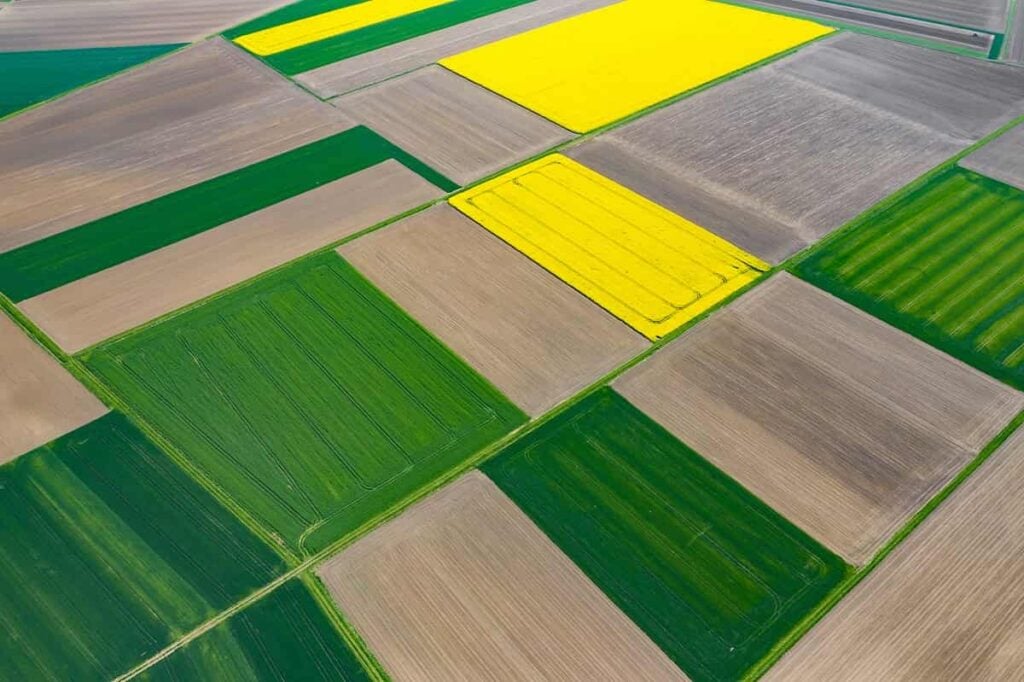Satellogic Stock: Turning Earth into Google Maps
Table of contents

While special purpose acquisition companies (SPACs) in their current form have been around since the 1990s, these shell corporations that acquire and merge with private companies have surged in popularity in the last couple of years. There have been more than 600 SPAC filings and about $170 billion raised since last year, according to the big brains at data research firm CB Insights. If you could point to one single company that helped launch the current SPAC mania craze, it would probably be Virgin Galactic (SPCE), which became the world’s first space tourism stock at the end of 2019. Since then, SPAC mergers have climbed dramatically.

The NewSpace industry has been a favored target for SPACs, given the high-risk nature of the business. At least a dozen space companies have now merged with or announced intentions to go public through a SPAC, with a combined value on paper of more than $27 billion.

We’ve covered them all but one.
| Virgin Atlantic | AST SpaceMobile |
| Momentus | Astra |
| BlackSky | Rocket Lab |
| Spire | Redwire |
| Arqit | Planet |
| Virgin Orbit | Satellogic |
It’s time to check out the offering from Satellogic, a geospatial intelligence startup that services one of the most competitive NewSpace markets.
About Satellogic Stock
Founded in 2010, Satellogic is an Argentinian company headquartered in Montevideo, Uruguay, which was the first country in the world to completely legalize weed. So there’s at least one positive thing to say about Satellogic. The company has raised about $124 million, with Chinese tech giant Tencent (0700.HK) the most notable name on the list. Half of the eight funding rounds involved convertible notes, which are a hybrid of equity and debt. That’s relevant here because some of the money attached to the merger with CF Acquisition Corp V (CFV) will go toward retiring Satellogic’s current debt load, leaving the new company about $274 million in the bank and with a valuation of about $850 million.
The Geospatial Intelligence Market
Satellogic would be the smallest by market cap of the four new publicly traded space companies specializing in geospatial intelligence if all goes as planned this year. The list includes Planet, which is by far the leader in geospatial intelligence, along with Spire Global (SPIR) and BlackSky (BKSY). Maxar Technologies (MAXR) and MDA (MDA.TO) are both more diversified space companies with core competencies in geospatial intelligence. And plenty of larger aerospace and defense companies, such as Aerobus (AIR.PA), also dabble in the space imagery and analytics business. Satellogic is a small fish in the big ocean of outer space.
The geospatial intelligence market involves acquiring, processing, and analyzing imagery from satellites and other aerial platforms to make money or save the planet, depending on the customer. For example, pictures from space can improve precision agriculture by detecting drought or disease. Other geospatial data that doesn’t necessarily require satellites can help design smart transportation solutions or forecast commodity prices. Increasingly, machine learning and other AI techniques are applied throughout the process.

Frankly, the size of the market is anyone’s guess – and there’s plenty of speculation to be found in the slew of shiny SPAC investor decks. Planet calculates a total addressable market (TAM) of up to $75 billion in the next few years. Spire Global estimates a TAM of about $90 billion and change, while BlackSky believes the market is closer to $40 billion. Satellogic swings for the fences, with a TAM north of $140 billion:

The company believes the key to beating the competition is being the player with the highest resolution images, collected more frequently, and obviously doing it cheaper than the rest. Let’s take a closer look at Satellogic’s technology and business model.
The Big Picture for Satellogic
Satellogic’s tagline is “Creating a Searchable Earth.” The premise is that the company will create a catalog of high-res planetary imagery at a frequency high enough to glean insights across industries, from agriculture and energy to finance and insurance. Satellogic is betting that its technology is both superior and cheaper than the competition, enabling it to outcompete on quality and cost. It designs and builds its own Earth-observing microsatellites, including cameras, on-board computers, power subsystem, sensors and actuators, optics, radios, and propulsion systems. The whole package allegedly has a third of the mass of similar satellites, which helps reduce launch costs.

Each NewSat satellite collects approximately 115,000 square miles of data per day, which Satellogic claims is “significantly” more than any competitor, which it says includes Airbus, Maxar, Planet, and BlackSky. Since Planet already images the entire Earth land mass daily, Satellogic needs to do it better, faster or cheaper to provide some sort of unique value proposition. (For example, BlackSky is attempting to compete on speed.) For Satellogic, it might be granularity. The company’s high-resolution multispectral cameras capture 70 centimeters per pixel to snap pictures like these:

Satellogic currently has 17 commercial satellites in orbit, including four that launched at the end of June. In addition to sharp images, each NewSat can produce full-motion videos up to two minutes long. The plan is to have a constellation of more than 300 NewSats orbiting the planet by 2025, which would allegedly make it “the only company capable of remapping the world at resolutions as high as 30 centimeters and at the frequency required to address virtually all commercial applications.” Each satellite is designed for a three-year operational lifecycle, which means Satellogic plans to continuously update its technology, refreshing as much as a third of the constellation every year.

Satellogic recently inked a launch contract with SpaceX to carry all those additional satellites into space.
Should You Buy Satellogic Stock?
We have no idea what stocks you should buy with your money. For us, it’s an emphatic “no.” Its projected market cap of $850 million is below our threshold of $1 billion, so we wouldn’t invest at this time regardless of how much revenue growth they had. Speaking of which, the company has yet to realize any significant revenue (defined as at least $10 million annually) through 2020. In 2021, they’re estimating just $7 million, before automagically ramping up to nearly $800 million by 2025. What you’re investing in with Satellogic is a growth story predicated on its claims that it has a superior product that is cheaper to build and launch and produces geospatial imaging of a quality and price that no other competitor can. The optics on the economics are eye-popping, if they’re even close to being true:

We’ll assume that leadership is on the up and up, and isn’t having a Momentus (MNTS) moment by fudging the capabilities of its technology. Since this is a SPAC, we don’t have the sort of granular details needed to understand the economics behind why their costs are so low. It’s one of many concerns about what’s not being said. For instance, there’s very little in the investor deck about the company’s actual data analytics platform. In contrast, Planet considers itself a data company first and foremost, meaning the emphasis isn’t on cool-looking Earth selfies but geospatial intelligence.
On Satellogic’s website, the company says it uses “advanced AI algorithms” to generate “scalable and very accurate insights like crop type identification before maturity, reservoir water level predictions, object tracking in our video product, among others.” At this point, it’s a given that we can take lots of pictures of the planet at will. The real value lies in the insights that a company can deliver to its customers. We simply can’t judge how well Satellogic’s AI matches up to the competition, which isn’t just limited to space companies with satellite constellations, but firms with sophisticated software that can do object identification and similar services without the capital overhead.
Conclusion
Regardless of how appealing Satellogic might end up being, we only want to invest in clear leaders. Right now that’s Planet, a company we may consider investing in once the SPAC merger is completed. The company has demonstrated strong revenue growth and is the obvious market leader in space-based geospatial intelligence based on a number of factors including satellites launched, data history, and total revenues.
History is filled with stories about superior technologies that fell to inferior ones. Readers of a certain age will remember the videotape format wars of the 1970s and 1980s between Beta and VHS. The former was generally considered the superior recording format but lost to VHS because the differences were negligible to consumers, who opted for the cheaper VHS format. If Satellogic can achieve the revenue growth they claim they can, the company may be worth revisiting. Until then, the world of geospatial intelligence belongs to Planet.
Once the merger transaction is complete, Satellogic will trade on the Nasdaq under ticker symbol SATL.
Sign up to our newsletter to get more of our great research delivered straight to your inbox!
Nanalyze Weekly includes useful insights written by our team of underpaid MBAs, research on new disruptive technology stocks flying under the radar, and summaries of our recent research. Always 100% free.
















Drones are far superior to satellites to detect effects of drought, disease, and nutrient deficiencies in crops as resolutions are much greater.
That may be the case but oftentimes farmers have a tough time using drones. We spoke to a firm in Indonesia that switched from drones to satellites because it was cheaper and easier. So perhaps the use of drones would be more fitting for large commercial growers that really want that level of granularity. Thank you for the comment!
I own Black Sky, Planet, Spire. I own a smaller position in CFV for Sattellogic. So far Black Sky is underwater but rising, Spire was a star until today but still a good profit, and Planet Labs is being sold off by Alphabet so I figured that was a no brainer. Of the first three I think Black Sky will win the race but I like all three. Cantor is backing Sattellogic and it has picked up some good press. I own all on your list but the two Virgins and Arquit. Can’t blame you on Arquit. It shot up 11 plus points today for a double. I will blame Benzinga, but it is a Brit company and fell thru the cracks.
There is a lot going for Sattelite companies today. Dropping launch cost and with Machine Learning and its ability to analyze shapes AI is also pushing the envelope. These are stationary sattellites but Just thing what Musk can do when he get 32000 of his sattlellites in the air. Multiply that by a factor of about 5 and one will be able to rent sattellite coverage of a part of the globe and go on their own controlled space tour. Don’t count out Momentus. Being able to move sattelites around in orbit is going to be a huge business.
It is very dangerous to use stock price appreciation as a proxy for the success of a business. Data history and the amount of data produced over time is critically important in our eyes, and Planet wins hands down holding 10X as much data as all their competitors combined with the most extensive data history. Arqit Quantum is extremely volatile and that’s not a good thing. As for Momentus, that whole SEC fine thing put that one to bed. More red flags than a Chinese parade. It’s a given the stories all speak of grandeur, that’s why looking for red flags is so important. The only way these companies will demonstrate traction is by achieving the lofty revenue growth they promised in their SPAC decks. We shall see.
Totally agree with you on Musk’s satellite constellation. He is going to absolutely dominate if he gets this right: https://nanalyze.com/2019/12/impact-cheap-satellites-launches/